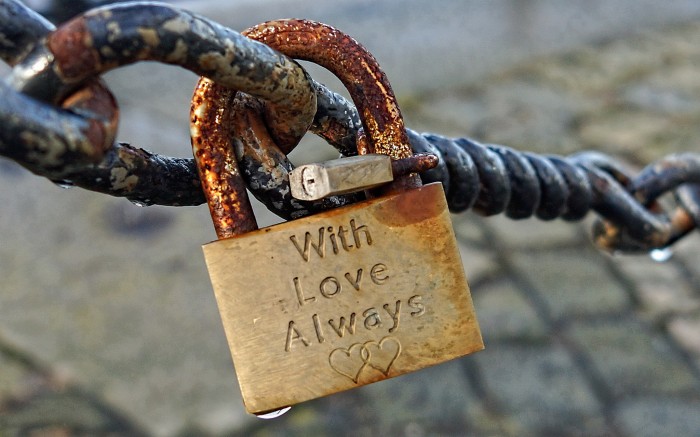You read my letter to a non-Poly lover…
…and you asked me to help you understand more fully how your lover can love you and also love another.
I’ll do my best.
Although poly is a handy term to use, it can also be misleading—just as any label can.
No two people or couple are alike and, therefore, what polyamory is to me may not be the same as it is to someone else. The same is true for monogamy, if you think about it. One person’s monogamy means being faithful in thought, word and deed, while another’s may mean no sex outside the primary relationship though their mind and heart (and even hands) may wander all over the place. In the same way, polyamory can mean, for some, the ability to be free to share on all levels, while for others, it is more about the freedom to acknowledge love openly than it is about sex.
Also, regardless of whether we consider ourselves poly or not, some of us are introverts with little liking for large circles of friends or lovers, while others thrive on community and are comfortable sharing our energy more widely. And, to add to that, we all have our own hang-ups and issues to work through, which also affect how, why and where we love.
It’s not always easy to understand exactly why one person considers themselves poly while another doesn’t!
So one of the challenges in understanding the perspective of a polyamorous lover is to discover what they, personally, mean by polyamory and what has brought them to that place in themselves. Taking the time to sit and hear their story—although it may be a difficult and highly emotive thing to do—is ultimately more deepening than pushing the subject away or fighting it.
It also gives you a chance to sense and express your own deeper concerns.
For me, polyamory means acknowledging that love can and does spring up between people, regardless of age, gender, marital status or background.
For me, it means finding ways of honoring that universal creative force which love is, and not blocking it when it arises. It means being open to allowing it into my life when it shows up, even if it arrives in a way I’m not expecting. But it also means using my discernment about how I express it, taking into consideration where I am in my own life, the circumstances around me and also the circumstances around others I’m connecting with.
I’m aware, though, that for others, polyamory can be more about sexual freedom than it is about love.
See, at a fundamental level, I don’t believe that love itself is the issue. If I were to ask you if you think it’s possible to love a best friend or a child at the same time as a lover, I’ve no doubt you’d say ‘of course’. And then you might add, ‘but that’s different—it’s a different kind of love’.
To which, in return I might ask, ‘how is it different?’
It’s not that I love my lover more than my child or best friend. I may, at times, but the reverse may also be the case at other times. It’s more that my intentions and expressions of love are different. And generally, this means that it is sexual chemistry/activity which is one of the key differentiating factors between one form of love and another.
In other words, one of the main issues that troubles us so much in dealing with poly is how we choose to express the love that we feel.
More fundamentally, though, the mere idea that a lover can love another can set off some very basic fears. We fear we will lose our lover to another and have to deal with the pain of that loss. We’re afraid we’re not good, clever or attractive enough.
We’re afraid of being talked about or, worse, laughed at behind our backs—afraid we’ll be betrayed by someone we have opened up to. In the face of fear, many choose to shut down or reject the perceived threat rather than take the time to feel the vulnerability and to deal with it.
Hard as it can be to feel these deep feelings of insecurity, the reality is that our physical world is a temporary one and that these are very real issues which it is wise to deal with as and when they come up, rather than pretending they don’t exist. We live in a temporary world and we cling to various aspects of it for security, including family, work, home, lovers.
Sometimes the process of coming to terms with polyamory can be the opportunity to work through some of our deepest insecurities and to make at least some degree of peace with them. It can be the chance to turn inwards for a while, to find the support of a good therapist and direct the energy towards inner healing—not necessarily with the intention of coming to a place of agreeing with the poly perspective, but with the intention of finding a deeper and more lasting sense of inner security.
Tied in with those insecurities can be other fears.
Conflicted feelings and thoughts around sex is a common one. We may get to a point of being comfortable with acknowledging each other’s freedom to love widely, but still have doubts about whether it’s just an excuse for our lover to get their rocks off at the slightest opportunity.
To untangle any web of confusion around sex takes more than this short piece of writing and there are plenty of articles and books available (including my own) on reconnecting with our innate sexuality.
But I would start the process by asking you to gently challenge accepted beliefs. Why is it wrong to want to have sex with more than one person? Why does the idea scare you?
What if it was the other way around—how would you feel being sexually attracted to someone who isn’t your current partner and how would deal with it?
Keep asking yourself ‘why’ and digging a little deeper each time until you find the core issue. You may find you come back to the fears I mention in the previous paragraph, or you may find that there are aspects of your lover’s behavior or attitude that you are deeply uncomfortable with because you’re not sure they are based on integrity.
Ultimately, for a couple to live comfortably and to thrive with polyamory requires a large amount of trust and strong communication skills, as well as a commitment to doing their own ‘personal work’ and to energizing the container of the relationship they have created together. You could argue that these are necessary for any healthy relationship, but they are particularly needed where two individuals are defining the boundaries of their connection based on their own specific needs rather than accepting a more socially-defined structure.
Whether or not both of you have the integrity and skills to be honest with yourselves and with eachother, to make time for your own connection and to have a degree of flexibility when it comes to handling fears and concerns, is something you have to judge for yourselves.
As a couple, you may need to build trust and communication first before being able to expand your relationship to encompass polyamory. But, conversely, discussing the subject of polyamory openly and working through doubts and fears together may be the vehicle for building trust and communication.
Above all, though, please remember that it is your choice, as a couple, to decide what is right for yourselves and for your relationship. There are always solutions and ways round apparent roadblocks if both of you are willing to allow the love, time and space for them to appear.
This isn’t about you ‘letting’ another do what they want or about another ‘making’ you do something you don’t want to. It’s about deepening your understanding of each other, which also means deepening self-understanding in the process.
It’s also about looking for a way of expanding the relationship to accommodate different (and changing) needs rather than forcing both of you to fit a pre-conceived and rigid idea of what a relationship should be.
In time, as humanity gets better at addressing core issues rather than surface concerns, we will hopefully all find a lighter way of looking at this.
Often it is the doubt and confusion that makes the whole subject of polyamory so heavy and when these are cleared, it is much easier to be light and loving about our connections with one another, to see them with humor and compassion rather than as a threat.
Love elephant and want to go steady?
Sign up for our (curated) daily and weekly newsletters!
Editor: Renée Picard
Image: Bevereley Goodwin at Flickr







Read 1 comment and reply